Conventionally, we ask: what is the impact of agriculture on ecosystems? How are farming activities affecting ecosystems? At the Ecosystem Services and Resilience Workshop in Montpellier, France, earlier this month, scientists flipped this question on its head: What about the impact of ecosystems on agriculture?
Ecosystem Services and Resilience is a cross cutting theme of the CGIAR Research Program on Water, Land and Ecosystems (WLE). At the workshop, scientists worked to determine exactly how WLE will address ecosystem services and resilience. Where better to bring a diverse bunch of scientists to whet their appetite than the iconic Camargue wetland in the Mediterranean?
White horses, black bulls, pink flamingos, brown rice, each emblematic of the many interests that would like the area manage to suit themselves. Scientists witnessed first hand the complexities embodied in ecosystems where different groups of people want different things from the ecosystem.
The Camargue is in the delta of the Rhone, a wetland triangle of 150,000 ha enclosed by the two main river channels. For the past 150 years these rivers have been constrained by dykes, and the mouth of the delta contained by a seawall. With the dykes in place, evaporation during the hot, dry, windy summers far exceeds winter rainfall. So for agriculture to succeed, water must be pumped in from the river. Having run through rice fields and picked up fertilizers and pesticides, water quality is poor.
Flow through the wilder, more natural areas of the delta has been reduced by the dykes, and recent rises of about 15 cm in sea level make emptying the lagoons harder. Consequently, salt water is intruding under the soils of the delta and upstream into the river, as far as the extraction pumps, threatening the rice crops. Upstream dams, to hold winter water back for release during the summer, could solve that problem, but what other problems might it create?
Management of the water regime – how much is pumped out of the rivers, how often, and when -- is under the advice of an executive committee that meets 3-4 times a year to set the levels and that gives a voice to four different groups of stakeholders, all of whom want different water regimes. Farmers want water sweet and low. Fishers want it high and brackish. The general populace prefers low water. And conservationists want variability more than anything else.
Conflict is inevitable, with perhaps the deepest being between farming and conservation. The conservationists would prefer less water to flow into the lagoon through the rice fields, not only because of pollution but also because it is harder to empty the lagoon now that sea-level has risen. At present, the farmers will not permit that, and because they are rich and have policy support they have the power on the committee. So what are the long-term plans in the face of continuing sea-level rises? None. “The scientists understand it well,”; explains Marie Granier, of the Commission Exécutive de l’Eau, “the community not.”
Resistance to variability is probably the biggest source of disagreement. Eric Coulet, Director of La Capelière, a 13,000 ha reserve within the Parc Naturel Régional de Camargue, is perfectly blunt.
“ Agriculture does not like chance. What they want is the same system with big production each year, and what I want is every year different and unpredictable.” Unpredictability underpins the greater biological diversity that conservationists value.
Coulet says that it takes at least 10 years to get an idea of how the complete ecosystem works. He’s been at it for 40 years, and in that time, he says, he has learned that pesticides are less harmful than fertilisers, which have resulted in growing blooms of cyanobacteria that mess up the lagoon ecosystem. While he has huge enthusiasm and, seemingly, bags of energy, Coulet also seems resigned to not being able to make much of a difference. “The natural is a by-product of agriculture,” he says, admitting that in his 40 years he has “not made much of an impact.”
This ongoing, endless conflict about the resources and ecosystem services of the Camargue impressed itself on the scientists.
That may indeed be the crux of the matter, because the people of France are supporting the big rice farmers, directly and through the Common Agricultural Policy. And that, in turn, is subsidising activities that are not very good for the rest of the Camargue ecosystem. What might be the long-term consequences of paying the farmers not to farm instead?
The framework being developed for research on ecosystem services and resilience for WLE will help to answer questions like this in future. Over the course of the next couple of months, we will be using this space to start a discourse on how ecosystems impact agriculture and vice versa. We welcome inputs and insights from the public as we develop the Ecosystem Services and Resilience framework.



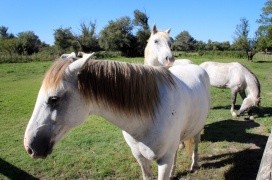
















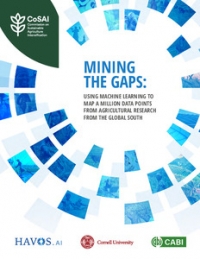
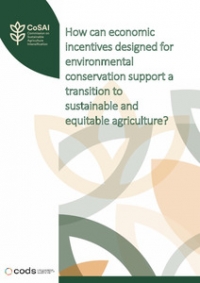
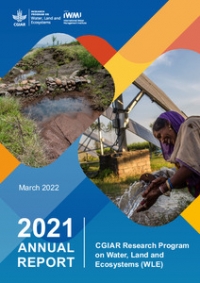
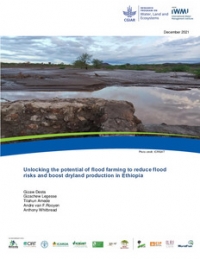
Comments
Thanks Jeremy for this lively summary of our field trip to the Camargue! Indeed it impressed on the scientists. What is quite obvious from your post is how much people are central to our ecosystem services and resilience work. Once one gets to the real issues, the emblematic white horses, black bulls, pink flamingos, and brown rice suddenly become secondary. Whereas people, power games and related "incentives" become central.
I just want to say how much I enjoy this information. Two things I like about the post, one it is straight forward and two it does not attempt to promote anyone's position particularly. Very valuable information Jeremy.